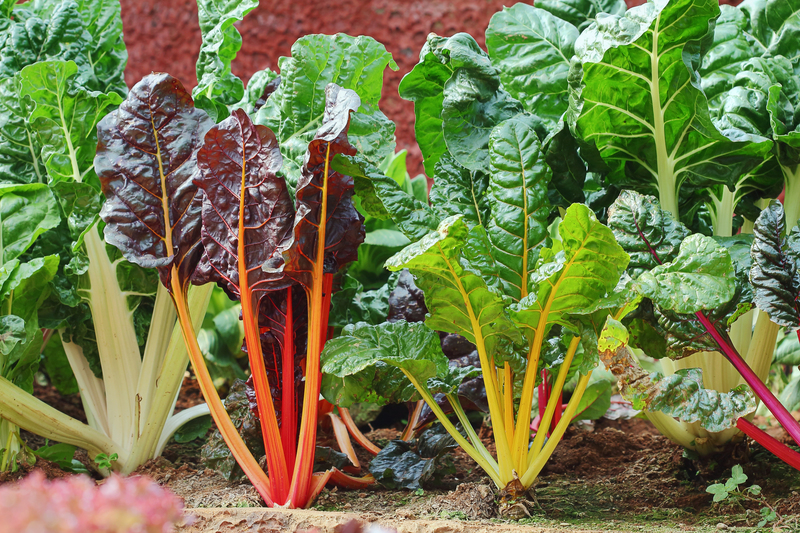Creating a Wind-Resistant Garden: A Practical Guide
Posted on 20/06/2025
Creating a Wind-Resistant Garden: A Practical Guide
A lush, thriving garden can often fall victim to the forces of nature--none more fierce and destructive than the wind. Whether you have a coastal property battered by sea breezes or an open landscape exposed to strong gusts, creating a wind-resistant garden can protect your plants, structures, and sanity. This practical guide will walk you through designing, planting, and maintaining a landscape that stands up to the windiest conditions, ensuring your garden flourishes for years to come.
Why Focus on a Wind-Resilient Garden?
Understanding the impact of strong winds is the first step toward protecting your outdoor sanctuary. Wind can:
- Break branches or uproot plants
- Dry out soil and foliage rapidly
- Scatter mulch and soil, leading to erosion
- Reduce pollination by deterring bees and other pollinators
- Transmit salt spray in coastal areas, which damages sensitive plants
By adapting your garden to be windproof, you not only shield your plants from damage, but also create a more comfortable outdoor space for you and your family.

Assessing Your Garden's Wind Exposure
Before you can build a wind-resistant landscape, it's vital to understand the type and intensity of wind affecting your garden. Consider these steps for your initial assessment:
- Identify wind direction: Pay attention to which way the prevailing winds blow throughout the year. Weather apps or local meteorological records can help.
- Monitor wind speed: Notice the intensity of gusts, especially during storms or specific seasons.
- Observe problem areas: Look for signs of damage like leaning trees, dried-out plants, or eroded soil.
- Map out existing barriers: Fences, buildings, and neighboring hedges may already provide partial shelter.
Tip:
Walk your garden on windy days and sketch a map marking the harshest zones and sheltered spots. This will guide your planting and windbreak design.
Designing a Wind-Resistant Garden Layout
The most majestic windproof gardens harness landscaping techniques and plant choices that combine beauty with resilience. Start with a well-thought-out design that tackles the wind head-on.
1. Establish Multi-Layered Windbreaks
The key to breaking the wind is creating barriers that deflect and filter, rather than stop wind abruptly. Effective windbreaks reduce wind speed while maintaining airflow, preventing turbulence that can cause even more damage.
- Outer Layer: Choose tall, fast-growing trees like willows, alders, or pines to form the first line of defense.
- Middle Layer: Use dense shrubs such as escallonia, viburnum, or cotoneaster to filter and slow the wind further.
- Inner Layer: Incorporate smaller hedges or thick perennial borders close to vulnerable planting areas.
Aim for staggered planting patterns and mixed species to mimic natural forests, which are the most effective at buffering wind.
2. Utilize Structural Windbreaks
For areas where planting is impractical, install physical barriers such as:
- Wooden or woven fences with gaps to allow air to flow through
- Trellises or lattices covered in climbing plants
- Boulder walls or large decorative rocks strategically placed to block and redirect gusts
Avoid solid walls, as they can cause wind to whip over and 'down-draft' onto delicate plants behind them.
3. Create Microclimates
Design pocket-sized, protected zones within your garden by clustering plants, building sunken beds, or molding gentle earth mounds. These microclimates shield sensitive species and give you more flexibility in choosing what to grow, even in storm-prone sites.
Best Plant Choices for Wind-Resistant Gardens
Selecting the right windswept garden plants is crucial. While wind can be harmful, some species thrive in exposed locations, adding beauty and protection to your space.
Tough Trees and Shrubs
- Tamarisk: Excellent for coastal situations
- Sea Buckthorn: Salt-tolerant and formidable
- Hawthorn: Hardy hedging with spring blossoms
- Pines and Spruces: Needle-shaped leaves resist wind desiccation
- Griselinia: Glossy evergreen, ideal for boundaries
- Privet: Quick-growing and dense
- Escallonia: Flowers attract pollinators even in breezy spots
Ground Covers and Perennials
- Lamb's Ear (Stachys byzantina)
- Lavender: Aromatic and resilient
- Thyme: Low-growing and wind-tough
- Daylilies: Minimal fuss, can handle rough weather
- Artemisia: Silvery foliage, low maintenance
Climbing Plants for Wind Barriers
- Clematis montana
- Climbing roses
- Honeysuckle (Lonicera)
- Winter jasmine
Tips for Plant Selection
- Choose flexible-stemmed plants; stiff species may snap in storms
- Favor deep-rooted varieties to anchor against strong gusts
- Mix evergreen and deciduous plants for year-round cover
- Consider native species that are already adapted to your area's typical winds
Soil and Plant Care in Wind-Prone Areas
Wind can dry out soil rapidly, sap moisture from leaves, and stress roots. Caring for your garden in these conditions requires a few special considerations.
1. Mulching is Essential
- Use heavier mulch materials like bark chips or gravel that are less likely to blow away
- Apply mulch generously to retain moisture, suppress weeds, and protect roots
2. Watering Wisely
- Irrigate deeply and infrequently to encourage deep root growth
- Avoid overhead sprinkling on windy days, as most water will evaporate or drift away
- Consider drip irrigation for efficient, targeted watering
3. Staking and Siting
- Stake young trees and tall perennials until well-established
- Place the most vulnerable plants in the most sheltered spots
- Ensure good spacing so that air can circulate but not accelerate between plants
Best Practices for Maintaining a Wind-Resistant Garden
Maintenance is just as crucial as design and planting in any garden resistant to wind. Follow these tips for robust, undaunted plants and landscape elements.
1. Continue Layering and Thinning
- Thicken hedges and prune for density, but thin out branches in trees to let wind pass through, reducing resistance and risk of breakage
- Replenish and repair windbreaks and barriers as needed
2. Feed and Monitor Plant Health
- Fertilize appropriately, especially after storms when stress is highest
- Watch for windburn (brown, dried leaf edges) and treat with timely watering or additional mulch
3. Seasonal Adjustments
- Check supporting stakes and ties each season
- Maintain soil structure by avoiding compaction and adding organic matter annually
- Consider temporary windbreaks such as shade cloths for new plantings or particularly windy seasons
Wind-Resistant Vegetable Gardening Techniques
If you dream of a productive wind-resilient vegetable garden, the right techniques are essential for healthy crops and high yields.
Smart Siting
- Locate vegetable beds near the most sheltering windbreaks
- Use raised beds for fast drainage and extra rooting depth
- Employ poly tunnels, cloches, or row covers to buffer direct wind impact
Crop Protection and Choices
- Choose fast-maturing, compact vegetable varieties less likely to be snapped or desiccated
- Grow wind-tolerant herbs such as rosemary or sage at the boundaries to offer natural barriers for more sensitive crops
- Interplant tall and low crops--for example, grow beans on tepees surrounded by cabbages to redirect the breeze
Attracting Wildlife to a Windproof Garden
Your efforts in building a wind-resistant garden can pay off in increased biodiversity and wildlife visitors. Dense hedges, mixed plantings, and sturdy trees provide vital shelter and food sources for birds, beneficial insects, and small mammals, adding beauty and ecological value to your landscape.
Summary: Building the Perfect Wind-Resistant Garden
- Assess wind exposure and map problem areas.
- Design layered windbreaks with resilient trees and shrubs.
- Choose wind-tough plants and native species.
- Care for your soil and water efficiently.
- Maintain hedges and barriers through thoughtful pruning and repairs.
- Protect and site vegetable crops smartly.
- Enhance wildlife habitat with dense, diverse plantings.
Embrace the Challenge and Enjoy the Rewards
Creating a wind-resistant garden is more than just a defensive strategy--it's an opportunity to craft a beautiful, functional space that grows stronger with every breeze. With the right knowledge, design, and plant choices, even the gustiest garden can be transformed into a windswept haven where you--and your plants--can thrive.

Frequently Asked Questions About Wind-Resistant Gardens
What are the best trees for a wind-resistant garden?
Some of the most effective trees for wind protection include pines, tamarisk, hawthorn, sycamore, alder, and native species suited to your local climate.
How do I protect young plants from wind damage?
Stake small trees, use protective windbreaks, and ensure they are deeply mulched and well-watered during establishment.
Should I install a solid fence or a permeable barrier?
Permeable barriers such as louvered fences or living hedges are more effective than solid walls, which can create damaging turbulence on the leeward side.
Can I create a windproof flower garden?
Absolutely--use compact perennials, ground covers, and dense borders combined with layered background hedges for both beauty and resilience.
Start Building Your Wind-Resistant Garden Today
Ready to enjoy a thriving garden no matter the forecast? Follow this comprehensive guide, and you'll soon watch your wind-resistant garden stand tall, rewarding your efforts with a flourishing, protected landscape every season of the year.

